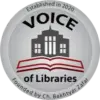Who is called personal author?ذاتی مصنف کسے کہتے ہیں؟
A personal author is an individual who is responsible for the intellectual content of a resource, such as a book, article, or manuscript. Personal authors are typically the creators of original works, such as novelists, poets, and nonfiction writers, but can also include editors, translators, and other contributors who have a significant role in shaping the content of a resource. Personal authors are generally listed first in the bibliographic record for a resource, and their names are typically included in the cataloging information, along with other information such as the title and publication details of the resource.
Who is called personal author?ذاتی مصنف کسے کہتے ہیں؟ Read More »
